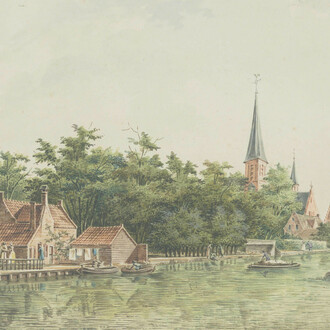The exhibition La mélancolie à l’infinie: Autant en apporte le vent (Infinite Melancholia: Gone With the Wind) presents a grouping of paintings, objects and sculptures placed in the gallery as a single installation. Through a monochromic palette of blacks, whites and grays, the objects address the state of the world. The contemplative experience of Bilodeau’s installation yields a sublime awareness of a perpetual cyclical movement of transience and reformation, of transitions and metamorphoses.
Simon Bilodeau depicts materiality as objective matter tamed by elemental forces or by human savoir-faire. He recovers materials with which our worlds are made: stone and metal, light and movement and presents them from a quasi-extraterrestrial perspective as innocent forms of existence.
There is a palpable silence about the individual works in the gallery space. Judgments and taste have no place in this scenario. The artist does not engage with any constructed discourses and avoids multiple references to the pedantic jargon of the Zeitgeist, and rather turns to the history of art and to concrete history. He focuses on fundamental neutral forces, which he infuses in his installations and shapes as martial or sensory aesthetics; from the soft penetration of light to the evocation of a violent destruction.
This indirectly depicted absolute force is the gene of constant change. It is an abstract component of the artist’s work which connects his various series thematically. For Bilodeau, geography, industry, architecture and objets d’art coexist as equals insofar as they bear witness to elementary phenomena such as vibrations, stability, equilibrium, pressure, erosion, modeling, and deformation. At the same time, his works of art are not the result of chance experiments, but of calculated choices and carefyl juxtapositions, they are subjected to a highly aestheticized presentation.
In this way, Bilodeau convincingly suggests that the pathos and the horror, the appreciation of beauty, the sensibility or the stupor, the admiration or the devastation, exist only in the gaze of the subject. The objects themselves – without the human perspective and subjectivity – are bare. Under the stage lighting of projectors, the reconstruction of broken architectural devices, remains or collections of debris, resembles still images drawn from the incessant shift between creation and destruction. A torso carved in stone, a dismantled wooden structure, small mirrored polygons pouring into the room like oversized snow crystals, a bust with a veiled face – all look like the abandoned furniture of a neglected apartment petrified for eternity.
In the paintings, we can recognize details of aerial views; empty landscapes, perspectives and structures that cannot be identified with precision. We can neither locate them nor define whether they have microscopic or cosmic dimensions. Human beings are absent from all the works – temporarily or permanently eradicated. Bilodeau manages to express, without judgment, without appeal and without prophecy, the cold and captivating beauty of an apocalyptic aesthetic – when everything finally calms down and nothing matters anymore. The exhibition is made of works of art. But really the artist presents a vision of world both reduced and extremely vast, one that reveals without affect an aesthetic influenced by the sublime.
Text by Dr. Tina Simon, translated from German by Anaïs Castro
















